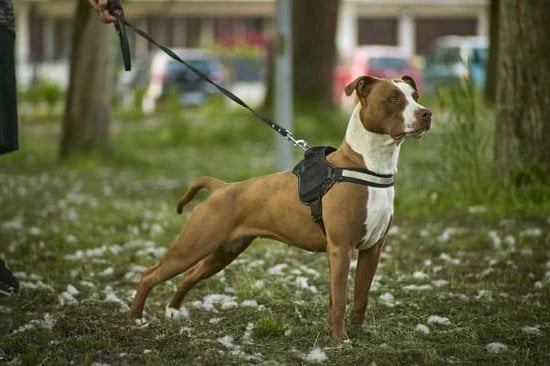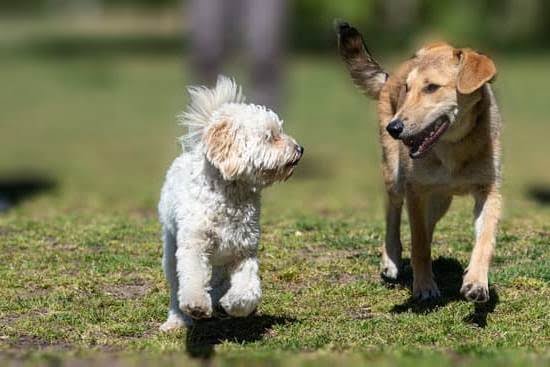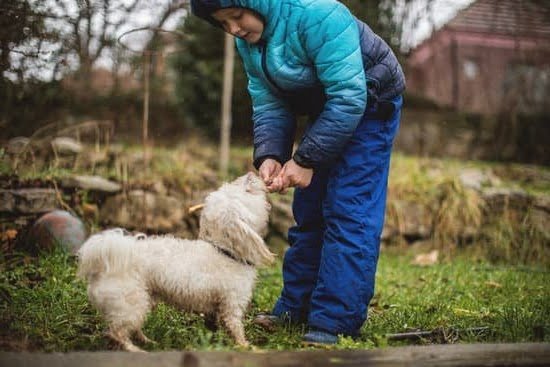Training an adult dog to pee on a pad can be a convenient and practical solution for pet owners who are unable to take their furry friends outside for frequent potty breaks. In this article, we will explore the essential steps and strategies to successfully train your adult dog to use a pee pad effectively.
From selecting the right type of pee pad to understanding your dog’s body language, we will cover everything you need to know to make this training process as smooth as possible.
One of the first steps in training an adult dog to pee on a pad is understanding the importance of this training. Whether due to health issues, busy schedules, or living situations that make outdoor potty breaks challenging, teaching your adult dog to use a pee pad can provide both you and your pet with peace of mind. By establishing a designated area for your dog to go potty indoors, you can minimize accidents and maintain a clean home environment.
Selecting the right pee pad for your adult dog is crucial in ensuring successful training. With various options available in the market, it’s important to consider factors such as size, absorbency, and odor control. Additionally, creating a consistent schedule for potty breaks and using positive reinforcement techniques can help encourage your adult dog to use the pee pad regularly. Understanding these fundamentals is key in effectively training your dog and maintaining a clean living space.
Selecting the Right Pee Pad for Your Adult Dog
When it comes to training an adult dog to pee on a pad, selecting the right pee pad is crucial for success. There are various options available, so it’s important to choose one that suits your dog’s needs and preferences. Consider factors such as size, absorbency, and odor control when selecting a pee pad for your adult dog.
Size and Absorbency
First and foremost, consider the size of the pee pad. For larger breeds or dogs that may need more space to do their business, a larger pee pad would be more appropriate. Additionally, select a pad with high absorbency to prevent leaks and messes in your home. This is especially important for adult dogs who may urinate more than puppies.
Odor Control
Another important factor to consider when choosing a pee pad for your adult dog is odor control. Look for pads that are specifically designed to neutralize odors effectively, as this will help keep your home smelling fresh and clean. Some pads even contain built-in pheromones that can attract your dog to use the pad.
Leak-Proof Design
Lastly, opt for a pee pad with a leak-proof design to contain any accidents and prevent them from seeping through onto your floors. This will save you time and effort in cleaning up messes. By carefully considering these factors when selecting a pee pad for your adult dog, you can set them up for successful potty training on the pad.
By understanding which type of pee pad is best suited for your adult dog, you can set the stage for successful potty training using positive reinforcement methods. With the right tools in place, you can then focus on creating a dedicated potty area and establishing a consistent schedule for your pet’s bathroom needs.
Creating a Designated Potty Area for Your Adult Dog
When creating the designated potty area, it’s important to choose the right pee pad for your adult dog. Consider the size of your dog, the absorbency of the pad, and whether or not it has odor neutralizing properties. Additionally, make sure to place the pad in a location that is easy for your dog to find and access.
Establishing a consistent potty schedule for your adult dog is another crucial aspect of training them to use a pee pad. Take note of your dog’s typical bathroom habits and try to take them to their designated potty area around those times. Consistency is key when it comes to training your adult dog, so be patient and stick to the schedule.
| Aspect | Description |
|---|---|
| Pee Pad Selection | Consider size, absorbency, and odor control when choosing a pee pad. |
| Consistent Schedule | Note your dog’s bathroom habits and take them to the potty area at regular intervals. |
| Patient Training Methods | Use positive reinforcement and be mindful of body language when training your adult dog. |
Establishing a Consistent Potty Schedule for Your Adult Dog
To create a consistent potty schedule for your adult dog, consider the following steps:
- Determine the frequency of potty breaks: Adult dogs typically need to go out to relieve themselves 3-5 times a day. Take into account your dog’s age, size, and breed when determining the frequency of potty breaks.
- Set specific times for potty breaks: Establish a routine by taking your adult dog out to their designated potty area at certain times during the day, such as first thing in the morning, after meals, and before bedtime.
- Be patient and consistent: It may take some time for your adult dog to adjust to the new schedule. Be patient and stick to the routine even if there are initial accidents.
Consistency is key when it comes to establishing a potty schedule for your adult dog. By following a regular routine, you’ll be able to effectively train your dog to use the pee pad.
In addition to creating a consistent potty schedule, it’s important to pay attention to your adult dog’s body language and signals for needing to go potty. Look out for signs such as pacing, sniffing around, or circling as indicators that they need to use the pee pad. By being attuned to these cues, you can effectively guide your adult dog towards using the designated potty area on their scheduled breaks.
Using Positive Reinforcement and Rewards to Encourage Your Adult Dog to Use the Pee Pad
Training an adult dog to pee on a pad requires patience, consistency, and positive reinforcement. Here’s how you can effectively encourage your furry friend to use the designated potty area:
1. Use treats: When your adult dog successfully uses the pee pad, immediately reward them with their favorite treats. This positive reinforcement will help them associate using the pad with receiving a tasty reward.
2. Praise and affection: In addition to treats, shower your adult dog with praise and affection every time they use the pee pad. Dogs respond well to verbal affirmations and physical affection, so make sure to give plenty of both when they successfully potty on the pad.
3. Clicker training: Clicker training can be a useful tool for reinforcing positive behavior. Whenever your adult dog uses the pee pad, use a clicker to mark the behavior and then reward them with a treat or praise.
Remember that consistency is key when using positive reinforcement to encourage your adult dog to use the pee pad. By consistently rewarding and praising your furry friend for using the designated potty area, you’ll help reinforce this desired behavior in their routine.
By implementing these positive reinforcement techniques, you can effectively train your adult dog to consistently use the pee pad as their designated potty area.
Understanding Your Adult Dog’s Body Language and Signals for Needing to Go Potty
Training an adult dog to pee on a pad involves not only providing the right tools and environment, but also understanding your dog’s body language and signals for when they need to go potty. By being observant and attentive to your dog’s cues, you can effectively train them to use the pee pad consistently.
Recognizing the Signs
Adult dogs, just like puppies, exhibit certain behaviors or cues when they need to relieve themselves. These can include pacing, sniffing around, circling, or suddenly becoming restless. Some dogs may even whine or scratch at the door. By recognizing these signs, you can quickly guide your adult dog to their designated potty area.
Communicating With Your Dog
To facilitate effective training, it’s important to establish clear communication with your adult dog. When you notice them showing signs of needing to go potty, calmly and assertively guide them to the pee pad area. Use verbal commands such as “go potty” or “pee here” as you lead them to the pad. Consistency in using these commands will help reinforce the association between the designated area and the act of eliminating.
Positive Reinforcement
When your adult dog successfully uses the pee pad, be sure to offer plenty of praise and rewards. Positive reinforcement goes a long way in encouraging desirable behavior. You can use treats, verbal praise, or physical affection as rewards for using the pad properly. This positive experience will motivate your adult dog to continue using the pad for their potty needs.
By paying attention to your adult dog’s body language and signals for needing to go potty, and effectively communicating with them during training sessions, you can set a solid foundation for successful pee pad training. Remember that patience and consistency are key when teaching an adult dog this new behavior.
Dealing With Accidents and How to Effectively Clean and Remove Odors From the Pee Pad
Accidents are a natural part of the training process when you are teaching your adult dog to pee on a pad. It’s important to understand that setbacks will happen, and it’s crucial to handle them with patience and consistency. When accidents occur, it’s essential to clean up properly to prevent your dog from being confused about where they should go potty.
One important aspect of dealing with accidents is to make sure you use an enzymatic cleaner when cleaning the pee pad. This type of cleaner helps break down the urine and eliminate odors that could attract your dog back to the same spot. Regular household cleaners may not completely remove the scent for your dog, leading them to continue using that area as a bathroom.
Along with cleaning up accidents properly, it’s important not to scold or punish your adult dog for having an accident. This can create anxiety or fear around going potty in front of you, which can hinder their progress in using the pee pad. Remember to stay patient and consistent, providing positive reinforcement when they use the designated area.
When training an adult dog to pee on a pad, one common challenge is dealing with resistance or hesitation from your pet. It’s crucial not to give up or become frustrated during this process but rather maintain a consistent routine and provide positive reinforcement. By staying patient and understanding your dog’s individual needs, you will be able to successfully teach them how to use the pee pad for their potty needs.
| Aspect | Tip |
|---|---|
| Cleaning | Use enzymatic cleaner for thorough cleanup |
| Training Approach | Avoid scolding or punishing your adult dog for accidents |
| Persistence | Maintain consistency and patience during training process |
Troubleshooting Common Issues and Challenges When Training an Adult Dog to Pee on a Pad
In conclusion, training an adult dog to pee on a pad can be a process that requires patience, consistency, and understanding. It is important to recognize the significance of this training, whether due to living in an apartment or for health reasons, and to approach it with the right mindset and techniques.
Selecting the appropriate pee pad for your adult dog is crucial, as it can greatly impact their willingness to use it. Creating a designated potty area and establishing a consistent schedule are also key components of successful training. Using positive reinforcement and rewards can help encourage your adult dog to use the pee pad and reinforce good behavior.
Understanding your adult dog’s body language and signals for needing to go potty is essential in preventing accidents. Accidents will happen during the training process, but knowing how to effectively clean and remove odors from the pee pad can make a significant difference in continuing the training without setbacks. In addition, being prepared to troubleshoot common issues and challenges that may arise during the training process is important for success.
In summary, with the right approach, dedication, and understanding of your adult dog’s needs and behavior, it is possible to successfully train them to pee on a pad. By following these guidelines and being patient throughout the process, you can ensure that your adult dog becomes comfortable with using the pee pad as their designated potty area.
Frequently Asked Questions
Can You Train an Older Dog to Use Pee Pads?
Yes, you can train an older dog to use pee pads. It may take a little more time and patience compared to training a puppy, but it is definitely possible with consistency and positive reinforcement.
How Do I Get My Dog to Pee on a Pad?
To get your dog to pee on a pad, start by placing the pad in a designated area where you want your dog to go potty. Encourage them to use the pad by taking them there frequently, especially after meals or naps. Use verbal cues and rewards to reinforce the behavior.
Is It Too Late to Train My Dog to Pee on Pad?
It is not necessarily too late to train your dog to pee on a pad, but it may be more challenging than starting when they were younger. Older dogs may have established habits, so it will require consistent training and patience to change their behavior. With dedication, it can still be achievable.

Welcome to the blog! I am a professional dog trainer and have been working with dogs for many years. In this blog, I will be discussing various topics related to dog training, including tips, tricks, and advice. I hope you find this information helpful and informative. Thanks for reading!





